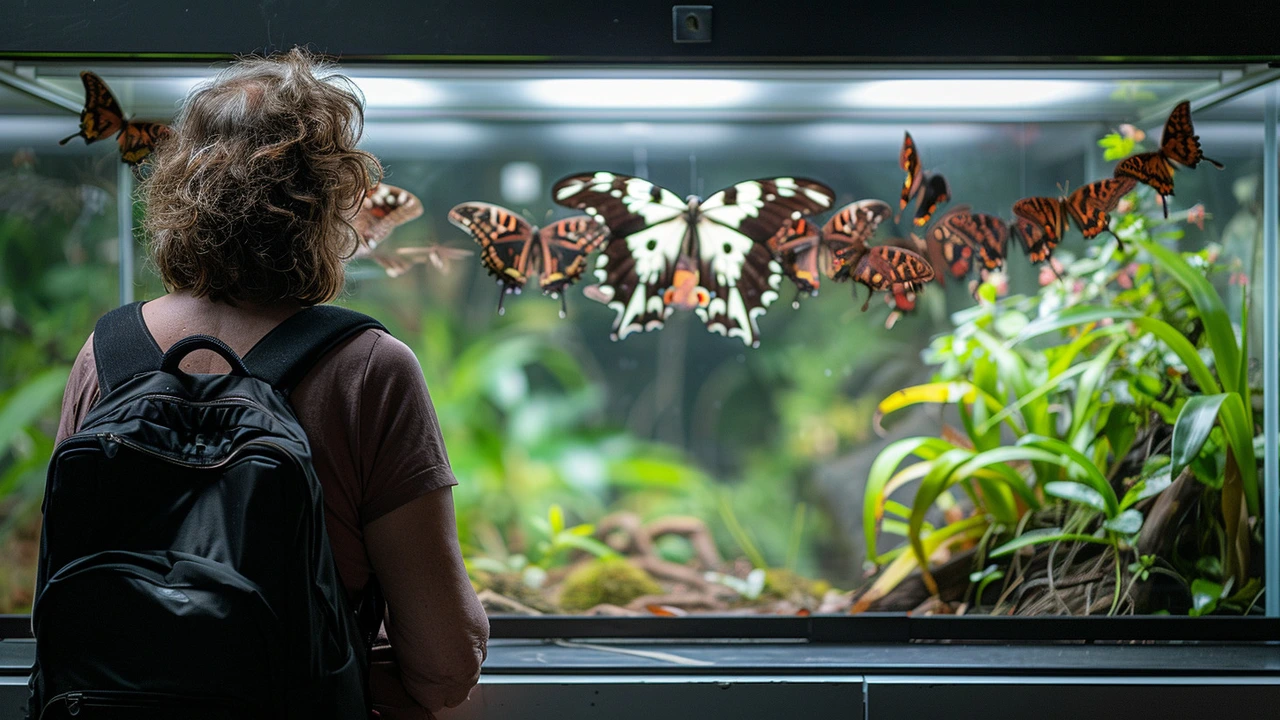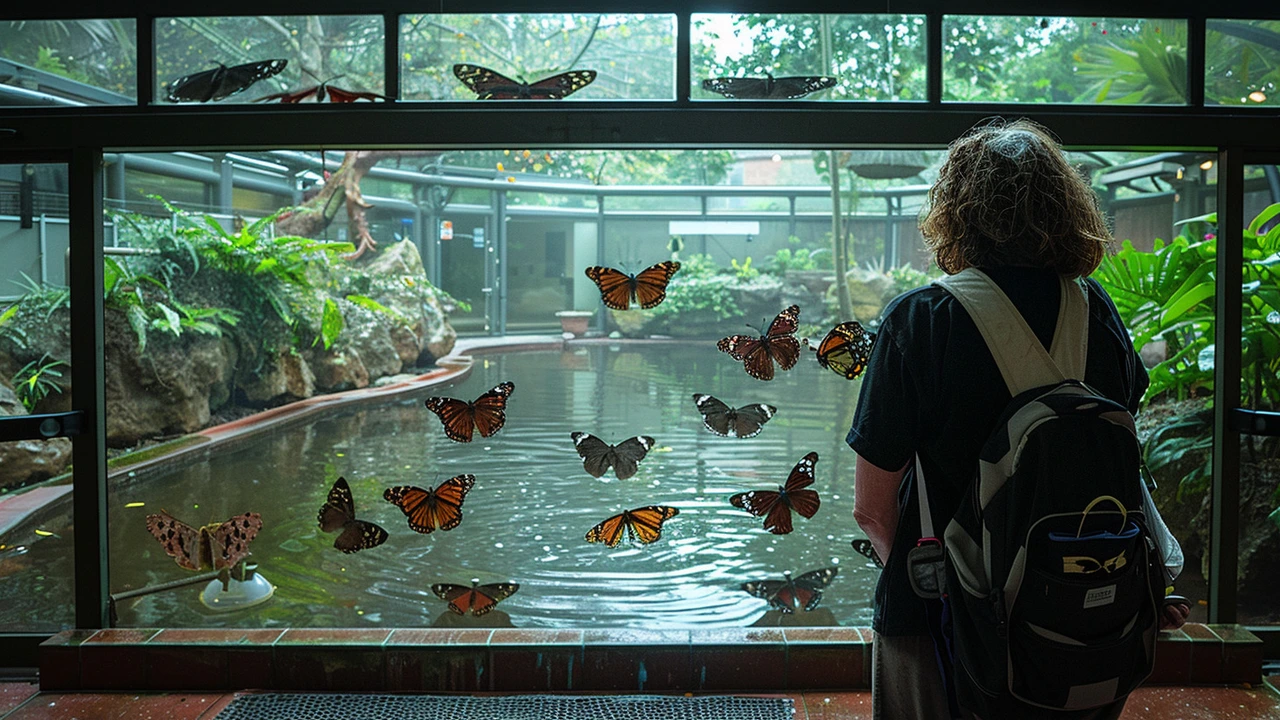Introduction: A Slice of Tanzania in Italy
In the heart of Trento, Italy, a unique initiative is weaving together the threads of biodiversity, conservation, and education. The Museo delle Scienze (MUSE) has embarked on an ambitious project to recreate a 600-square-meter forest to mirror the rich ecosystem of the Udzungwa Mountains in south-central Tanzania. This verdant oasis isn’t just a visual marvel; it’s an innovative effort to raise awareness about biodiversity research and the urgent need for conservation strategies in the face of global environmental challenges.
The Recreation of a Thriving Ecosystem
At the core of this project is a tropical greenhouse that houses various butterfly species in an environment that meticulously mimics the Udzungwa Mountains. Visitors walking through this recreated forest are greeted by the vibrant flutter of butterfly wings, evidence of a well-balanced ecosystem. This endeavor is much more than a botanical display; it’s a living, breathing laboratory designed to educate and inspire.
The Udzungwa Mountains are renowned for their rich biological diversity. They are home to over 2,500 plant species, 120 mammal species, and thousands of invertebrate species, making them a perfect case study for understanding ecosystems. By creating this miniature version of the Udzungwa, the MUSE aims to illustrate the complex interplay of flora and fauna that sustains biodiversity.
The Butterfly Forest: A Microcosm of Biodiversity
Butterflies are at the heart of MUSE's tropical greenhouse. These delicate insects have a crucial role as pollinators, indicators of biodiversity, and as part of the food web sustaining other animals. The Butterfly Forest captures this dynamic relationship, offering a window into the myriad interactions that stabilize ecosystems. Furthermore, it brings into sharp focus the threats that butterflies, and by extension, many other species face due to human activities.
Deforestation and climate change pose significant threats to this delicate balance. As forests are fragmented for agriculture or urban development, the movement of insects is restricted, leading to diminished genetic diversity and a decline in populations. Parallelly, changing climatic conditions disrupt butterfly life cycles, affecting their development, mating behaviors, and migration patterns. Through this exhibit, MUSE aims to shed light on these issues and foster a deeper appreciation for the intricate web of life that inhabits tropical forests.

Collaborative Efforts for Conservation
The creation of this forest isn’t an isolated effort. It’s a collaborative project that draws on the strength of international partnerships. MUSE’s ecological monitoring center, established in 2006 in collaboration with Tanzania National Parks, underscores the importance of global cooperation in addressing environmental challenges. This center supports ongoing ecological monitoring, biodiversity research, and environmental education, providing a continuous stream of data to inform conservation efforts.
One of the main tasks of this collaboration is to develop and implement conservation strategies that can be applied both locally and globally. The insights gained from studying the Udzungwa Mountains and other similar environments are instrumental in forming policies and practices that aim at preserving natural habitats, promoting sustainable farming, and protecting insects from the adverse effects of climate change.
Educational Impact and Public Awareness
The true strength of this project lies in its potential to educate and inspire. The tropical greenhouse in Trento is not just a scientific endeavor but also a powerful tool for public engagement. By bringing the wonders of a Tanzanian forest to an Italian audience, MUSE hopes to cultivate a sense of wonder and responsibility towards nature. The exhibit features approximately 200 plant species and 13 animal species, creating a multi-sensory experience that highlights the beauty and interconnectedness of life.
Through guided tours, interactive displays, and educational programs, visitors learn about the importance of biodiversity and the steps that can be taken to protect it. This knowledge is critical in changing attitudes and behaviors, encouraging individuals and communities to take action towards sustainable living.

The Role of Research and Monitoring
Effective conservation strategies are rooted in solid scientific research. In this regard, the recreated forest serves as a site for ongoing study and observation. Scientists monitor the health and behavior of the species within the greenhouse, gathering data that can be extrapolated to understand broader environmental trends. This research is especially pertinent in high-altitude environments like the Udzungwa Mountains, which are particularly sensitive to the effects of climate change.
By translating this research into actionable insights, the Butterfly Forest project aims to contribute to global efforts in combating biodiversity loss. Key findings are shared with policymakers, conservationists, and the general public, fostering a collaborative approach towards environmental stewardship.
Challenges and Future Directions
Despite the successes, several challenges remain. One significant hurdle is the need to shift farming policies to preserve natural habitats. Agricultural expansion often comes at the cost of forested areas, leading to habitat destruction. Policies that promote sustainable farming practices and the conservation of natural landscapes are essential in mitigating this issue.
Additionally, there is a pressing need to address the impacts of climate change. This involves not only reducing carbon emissions but also implementing measures to protect vulnerable species. By creating resilient ecosystems and promoting adaptive strategies, the aim is to safeguard biodiversity against the changing climate.
Looking ahead, the MUSE project plans to expand its educational and research efforts. This includes developing new exhibits, enhancing public outreach programs, and strengthening international collaboration. By doing so, they hope to create a broader impact and foster a global community committed to conservation.

Conclusion
The recreated Tanzanian forest at MUSE is more than a captivating exhibit; it’s an emblem of hope and a call to action. It underscores the importance of biodiversity, the threats it faces, and the role that each of us can play in protecting our planet. Through research, education, and international cooperation, this project exemplifies the collective efforts needed to preserve the natural world for future generations.







Comments
Lisa J
June 12, 2024 AT 10:04 AMThis is so cool 🌿🦋 I wish more museums did this instead of just static exhibits. Real life nature > glass cases any day.
Bronwen Davies
June 12, 2024 AT 22:06 PMIt's like stepping into a living poem - the flutter of wings, the hum of unseen insects, the damp earth scent trapped in humidity. This isn't just an exhibit, it's a love letter to the wild places we're slowly forgetting.
Aquilino Mcquiston
June 14, 2024 AT 10:58 AMI mean yeah its impressive but why not just fund actual conservation in tanzania instead of shipping butterflies to italy like some kind of exotic pet store
Cindy Crawford
June 14, 2024 AT 16:22 PMActually the Udzungwa Mountains have over 2,500 plant species but only 13 animal species in the exhibit? That’s a 99.5% reduction. You’re not educating people you’re performing a circus act.
Markos Charatzas
June 14, 2024 AT 23:56 PMThis is cultural appropriation disguised as conservation. They take our forests, put them in a greenhouse, charge tourists, and call it education. Meanwhile real people in Tanzania get bulldozed for mining.
Lena Michaels
June 15, 2024 AT 07:33 AMI mean sure its cute but if you really cared youd be paying Tanzanian scientists to lead this project not just using their forest as a backdrop for your italian museum marketing
Lea Ranum
June 16, 2024 AT 21:19 PMI cried. I literally cried. This is the most beautiful thing ive ever seen. Someone please tell me where to donate because i need to fix the world right now
Linda Lewis
June 18, 2024 AT 09:08 AMNice.
Pinkesh Patel
June 19, 2024 AT 23:11 PMthis is not real conservation its just a show. real conservation is when you stop people from cutting trees not when you put butterflies in a glass box in europe
Jason Frizzell
June 21, 2024 AT 10:12 AMI get the point but i wonder if the butterflies are stressed being in a climate-controlled room 24/7. Like they're not really free. Maybe it's kind of cruel even if it's well-intentioned
Ethan Steinberg
June 21, 2024 AT 13:33 PMWhy are we spending money on this when we have homeless people in america? This is pure woke virtue signaling. Save the butterflies? Save our own country first.
Steve Williams
June 22, 2024 AT 13:20 PMthis is stupid. africa is poor. why you bring their forest to europe? let them keep it. they dont even know how to protect it anyway
Andy Persaud
June 24, 2024 AT 10:15 AMOkay but is it even accurate? I mean how many people actually believe this tiny greenhouse is the same as a real mountain forest? This is just theater.
ANGEL ROBINSON
June 25, 2024 AT 03:07 AMThe real win here isn't the butterflies - it's the bridge. This exhibit forces people who've never thought about Tanzania to care about a place they'll never visit. That's the first step to global empathy. The rest? That's policy. But you gotta start with wonder.
Deborah Canavan
June 25, 2024 AT 22:52 PMI spent an hour just watching the butterflies. They don't care about borders or museums or conservation slogans. They just live. And that's what this reminds me of - life, stubborn and beautiful, trying to keep going even when everything else is falling apart.
Thomas Rosser
June 26, 2024 AT 19:35 PMThis is a distraction. The real threat? The UN is using this to push their Agenda 2030. That greenhouse is a surveillance hub. They're tracking your DNA through butterfly pollen. 🌍🦋👁️
Lindy Loo
June 27, 2024 AT 12:57 PMI used to think museums were just old stuff in glass cases. This changed everything. I flew to Trento last month just to walk through it. I didn't know I could feel so small and so connected at the same time. I brought home a leaf from the exhibit - not to keep, just to touch when I need to remember that the world is still wild, even if we've forgotten how to see it.